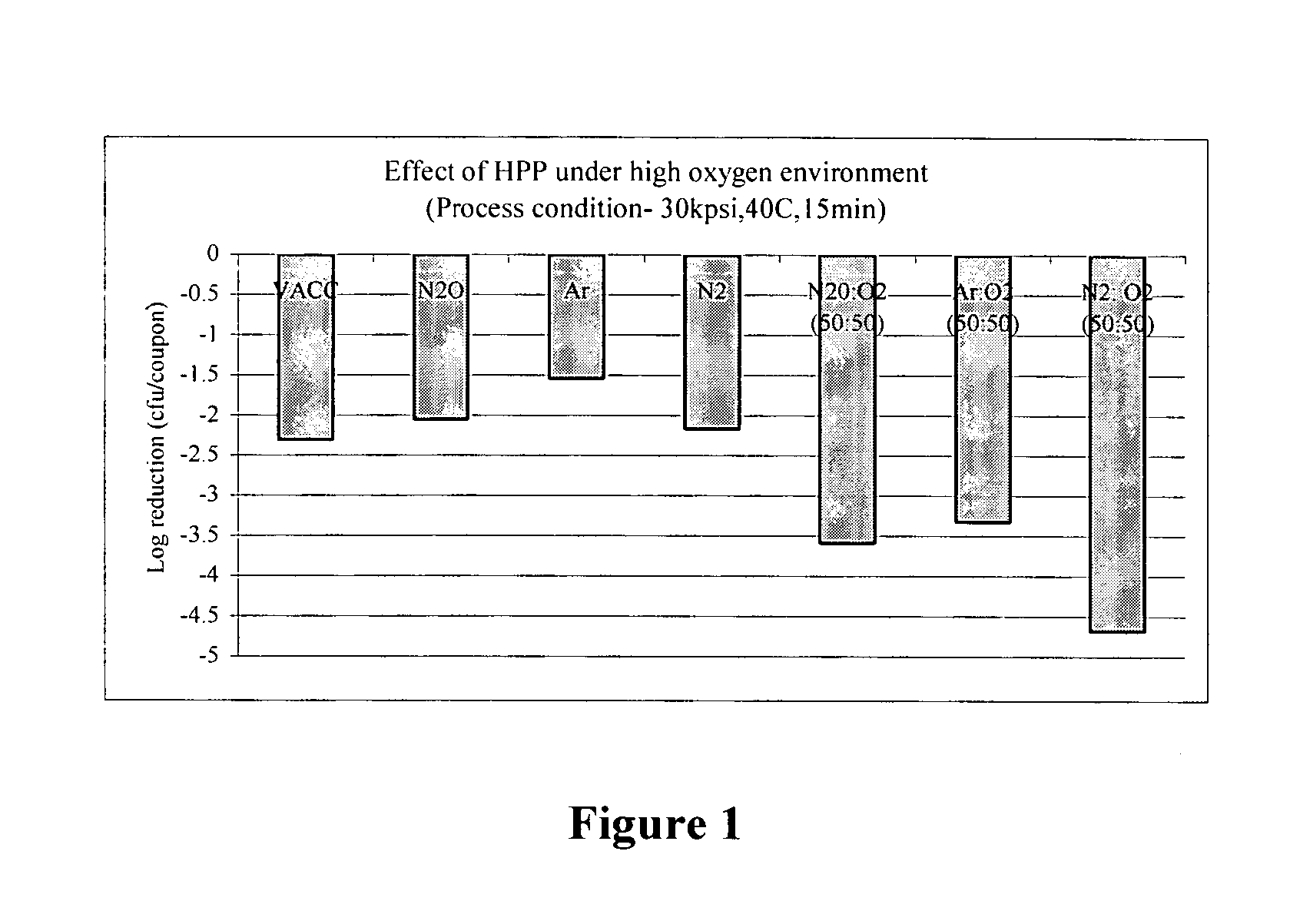Method of using oxygen enriched supercritical fluids to disinfect foods
a supercritical fluid and oxygen-enriched technology, applied in the field of high-pressure processing (hpp) technology on food applications, can solve the problems of foodborne illness outbreaks, economic loss, quality deterioration and microbiological contamination, etc., and achieve the effect of improving food safety and quality
- Summary
- Abstract
- Description
- Claims
- Application Information
AI Technical Summary
Benefits of technology
Problems solved by technology
Method used
Image
Examples
example 1
[0035] Generic Escherichia coli strains (JM101, EC11229, EC6) were grown individually in tryptic soy broth (TSB). Three strains were mixed in equal ratio and used as a cocktail inoculum.
[0036] A 15 cm diameter of agar disk (15 g of agar dissolved in de-ionized water, sterilized for 15 minutes, poured on petri dishes and stored at 4° C.) was used a carrier for the inoculum. Each agar disk was inoculated with 0.1 ml of cocktail culture and it was spread evenly using a hockey stick. The disks were air dried under the laminar flow hood for at least 30 minutes. Each disk was placed into a high barrier nylon pouch, vacuumed, flushed with 40 cm3 of appropriate gas mixture, and sealed with a heat sealer. Then each pouch was placed inside another bigger pouch and this outer pouch was vacuum-sealed. Pouches were stored at 2° C. overnight prior to the HPP.
[0037] The water-jacketed pressure vessel was preheated to the desired process temperature (40° C.) while the pressure transmitting medium...
example 2
[0039] Three strains of generic Escherichia coli (JM101, EC11229, EC6) were grown in tryptic soy broth (TSB) at 35° C. for 24 hours. Three strains were mixed in equal ratio and were diluted in Sorensen's phosphate buffer at pH 7.0 at 2° C.
[0040] An inoculum solution was placed in a stainless steel vessel placed in an ice slurry and flushed with each gas at ambient pressure for 10 min. Gas was allowed to set for 3 min. Once the inoculum was flushed with a gas, approximately 10 ml of samples were withdrawn into a pouch made from gas impermeable films. The pouch was sealed immediately with a heat sealer and placed inside of another pouch. The outer pouch was filled with 10 ml water and heat-sealed. The headspace was kept minimum during the sealing of pouches. Pouches were stored at 2° C. overnight prior to the HPP. Pouches of inoculums prior to the gas flushing were also prepared and stored at 2° C.
[0041] Sample pouches were processed with Quintus Food Processor Model 6 (Flow Interna...
PUM
 Login to View More
Login to View More Abstract
Description
Claims
Application Information
 Login to View More
Login to View More - R&D
- Intellectual Property
- Life Sciences
- Materials
- Tech Scout
- Unparalleled Data Quality
- Higher Quality Content
- 60% Fewer Hallucinations
Browse by: Latest US Patents, China's latest patents, Technical Efficacy Thesaurus, Application Domain, Technology Topic, Popular Technical Reports.
© 2025 PatSnap. All rights reserved.Legal|Privacy policy|Modern Slavery Act Transparency Statement|Sitemap|About US| Contact US: help@patsnap.com

